No products in the cart.
Istanbul is a city that wears its cultures and history well, blending them into an exciting city that has much to offer travelers from around the world. Founded during Neolithic times, Istanbul today is a modern city that remains true to its historic heritage through its mosques, basilicas and cathedrals, and ancient bazaars. Standing between the East and the West, Turkey’s largest city offers an aura of intrigue and charm that will appeal to all visitors. An overview of the top tourist attractions in Istanbul:
10. Galata Tower
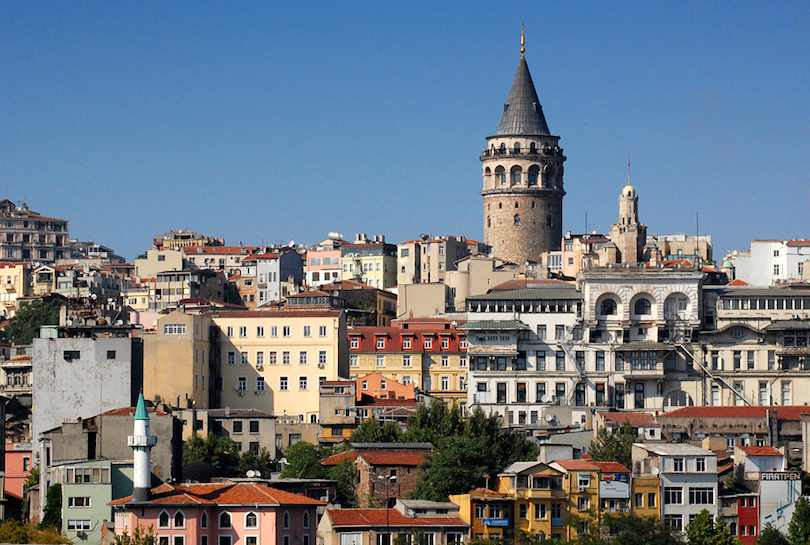
At 67 meters (219 feet) high, the Galata Tower rules over the Istanbul skyline, offering great views of the old city and its surroundings. The medieval stone tower, known as the Tower of Christ, was the tallest building in Istanbul when it was built in 1348. It still stands tall over Istanbul today. The tower has been modified over the centuries, at one time being used as an observation tower to spot fires. Today, its upper reaches include a café, restaurant and a night club, both reached by elevator in the nine-story building, where one can find the stunning vistas.
9. Istanbul Archaeological Museum
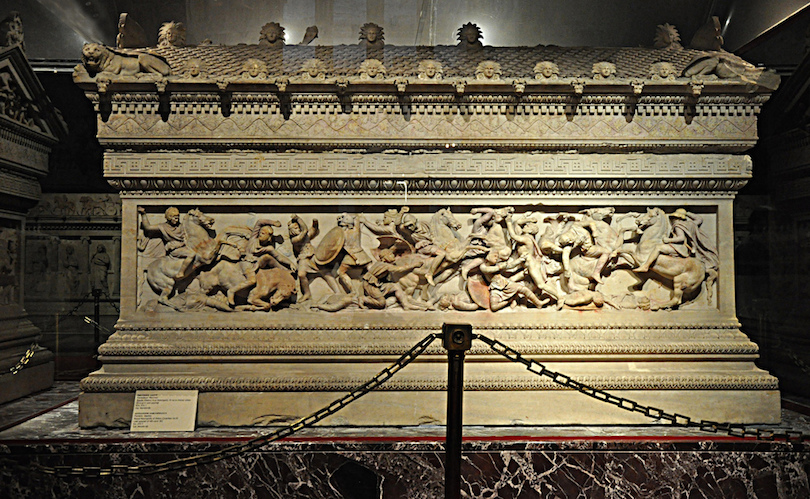
One of the most important museums in Turkey, the Istanbul Archaeological Museum is actually three museums: the Archaeological Museum, the Ancient Orient Museum and the Tiled Kiosk Museum. The three museums combined contain more than 1 million objects from civilizations around the world. Founded in 1891, it was the first Turkish museum, and was located on the Topkapi Palace grounds. The Tiled Kiosk dates back to 1472. The museums contain thousands of precious artifacts, including the sarcophagus of Alexander the Great.
10 Top Tourist Attractions in Istanbul
Istanbul is a city that wears its cultures and history well, blending them into an exciting city that has much to offer travelers from around the world. Founded during Neolithic times, Istanbul today is a modern city that remains true to its historic heritage through its mosques, basilicas and cathedrals, and ancient bazaars. Standing between the East and the West, Turkey’s largest city offers an aura of intrigue and charm that will appeal to all visitors. An overview of the top tourist attractions in Istanbul:
10. Galata Tower
 flickr/onnufry
flickr/onnufryAt 67 meters (219 feet) high, the Galata Tower rules over the Istanbul skyline, offering great views of the old city and its surroundings. The medieval stone tower, known as the Tower of Christ, was the tallest building in Istanbul when it was built in 1348. It still stands tall over Istanbul today. The tower has been modified over the centuries, at one time being used as an observation tower to spot fires. Today, its upper reaches include a café, restaurant and a night club, both reached by elevator in the nine-story building, where one can find the stunning vistas.
9. Istanbul Archaeological Museum
 flickr/Bochum1805
flickr/Bochum1805One of the most important museums in Turkey, the Istanbul Archaeological Museum is actually three museums: the Archaeological Museum, the Ancient Orient Museum and the Tiled Kiosk Museum. The three museums combined contain more than 1 million objects from civilizations around the world. Founded in 1891, it was the first Turkish museum, and was located on the Topkapi Palace grounds. The Tiled Kiosk dates back to 1472. The museums contain thousands of precious artifacts, including the sarcophagus of Alexander the Great.
8. Chora Church
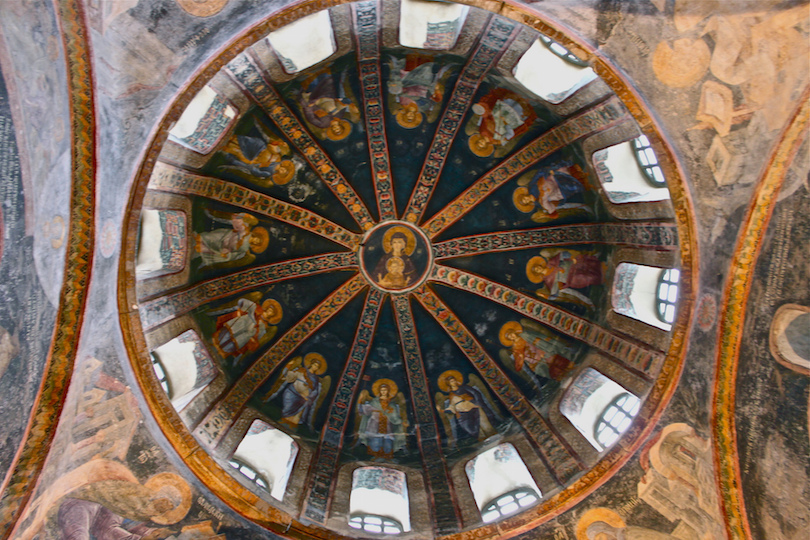
The Chora Church may be a little bit off the beaten tourist path, but visitors say the beautiful Byzantine art is well worth the effort to get there. Magnificent mosaics and frescoes depict the life of Jesus and his mother, Mary. Known as the Church of the Holy Savior in Chora, it has been described as one of the most beautiful surviving works of Byzantine architecture. Dating back to the days of Constantine, the Chora was a monastery in its early years; a few centuries later, it became a mosque, and in 1948, it was converted to a museum.
7. Basilica Cistern
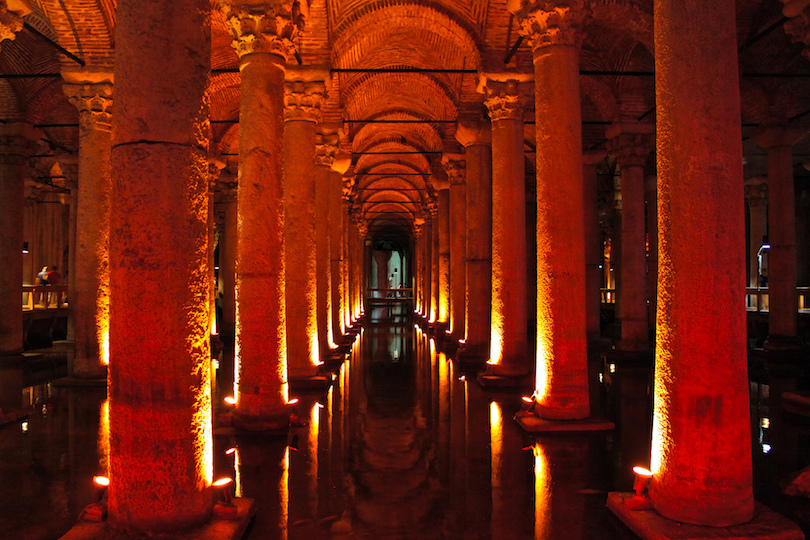
The Basilica Cistern has been providing Istanbul residents with water since the sixth century when it was ordered built by the Roman Emperor Justinian I. A visit leaves travelers raving about the technology the ancient Romans used to build this architectural wonder that was very advanced for its day. The underground cistern, just a few steps away from the Blue Mosque, was built on the site of a basilica that was constructed in the third century. Known as the Sunken Palace, the cistern can hold up to 2.8 million cubic feet of water. The cistern is one of the locations used in From Russia with Love, a James Bond thriller filmed in 1963.
6. Dolmabahce Palace
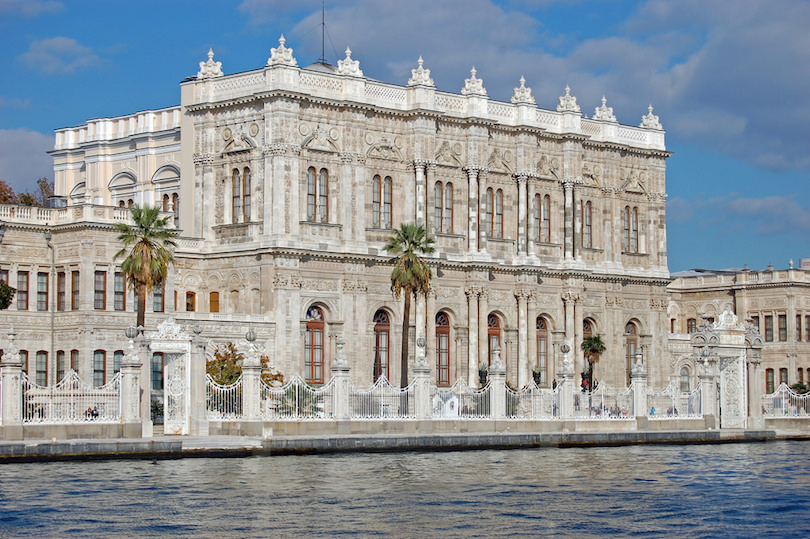
Luxurious, plush and beautiful are just some of the adjectives used to describe the Dolmabahce Palace, which has been compared to the Palace of Versailles. Built in the 19th century using 14 tons of gold leaf, Turkey’s most glamorous palace blends traditional Ottoman architecture with the European styles of Neoclassical, Baroque and Rococo. Home to six sultans from 1856 to 1924, it also is home to the world’s largest Bohemian crystal chandelier, a gift from Queen Victoria. The Dolmabahce Palace’s setting is stunning: It was built along the Bosphorus coastline.
5. Suleymaniye Mosque
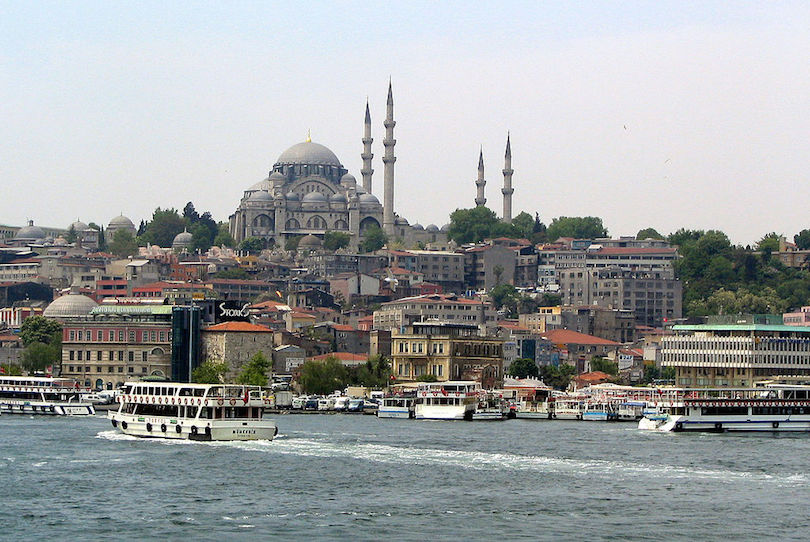
Visitors to the Suleymaniye Mosque say its beauty and peacefulness gives them an inspiring sense of spirituality. Located on the Third Hill of Istanbul, the mosque was ordered built in 1550 by the Sultan Suleyman the Magnificent. The mosque, indeed, is magnificent, blending the best of Islamic and Byzantine architecture. The mosque was extensively damaged over the years, including during World War I when a fire broke out while the gardens were used as a weapons depot. It was restored in the mid-20th century. The mosque is marked by four minarets, indicating it was built by a sultan. When it was built, the dome was the highest in the Ottoman Empire.
4. Grand Bazaar
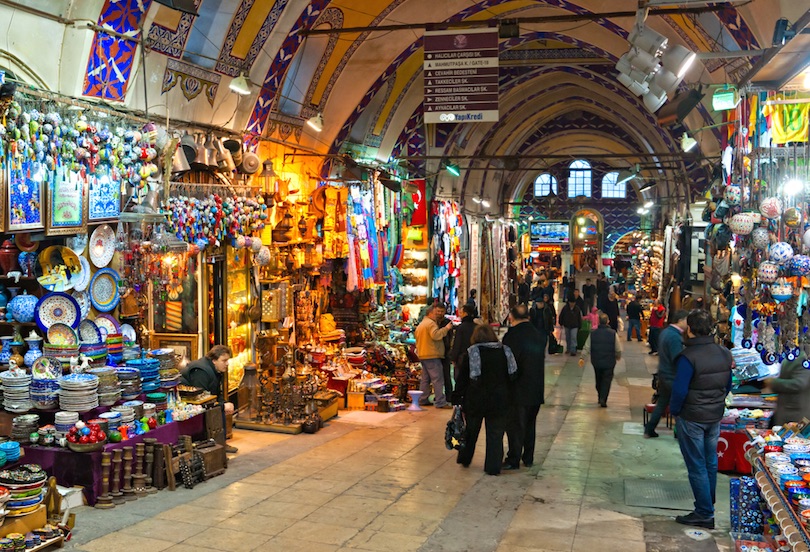
Travelers who love to shop shouldn’t miss out on a visit to the Grand Bazaar, with 5,000 shops making it one of the largest indoor marketplaces in the world. Receiving more than a quarter-million visitors a day, the bazaar features such items as jewelry, carpets that may or may not fly, spices, antiques and hand-painted ceramics. The bazaar dates back to 1461 and today is home to two mosques, four fountains, two hammams or steam baths, and the Cevahir Bedesten, where the rarest and most valuable items have been found traditionally. Here is where shoppers will find old coins, jewelry with precious gems, inlaid weapons and antique furniture.
3. Topkapi Palace
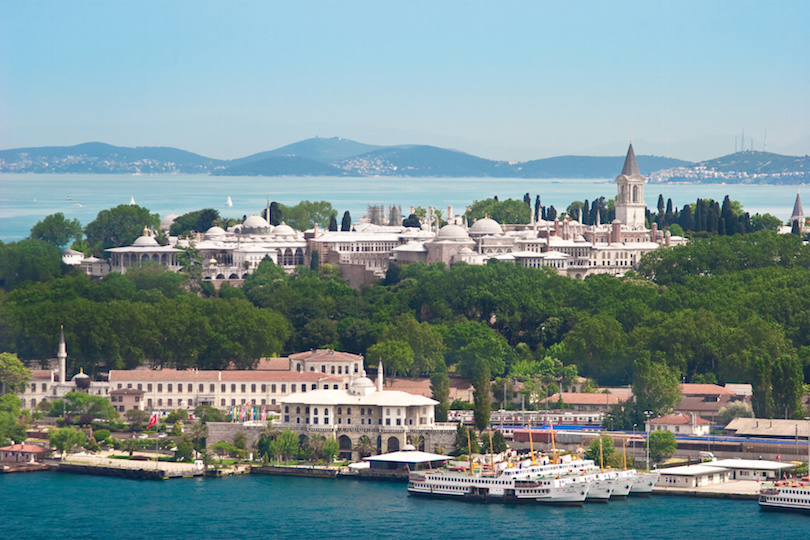
Topkapi Palace is one of the must-see attractions in Istanbul that combines history and stunning scenery in an experience that is not to be rushed.
For almost four centuries, the opulent Topkapi Palace served as the official residence of the sultans who ruled the Ottoman Empire. It is one of the world’s largest extant palace. Sultan Mehmed II started work on the palace shortly after the conquest of Constantinople in 1453 and lived here until his death in 1481. In 1924, the palace became a museum that exhibits an extensive collection of art, porcelain, jewelry, manuscripts and other treasures of the Ottoman Empire. Important artifacts include the jewel-encrusted Topkapi dagger and the 86-carat Spoonmaker’s Diamond. The palace is also home to venerated Islamic relics, including the Prophet Mohammed’s sword and cloak. Most of the stunning complex is open to the public.
The Ottoman palace has four primary courtyards and several outbuildings. Known as the Janissaries Court, the first courtyard is where elite palace soldiers stood guard. The square contains a magnificent fountain and the Byzantine church of Hagia Irene, which Emperor Justinian constructed in the 548. The church survived because it was used as a storehouse and imperial armory by the Ottomans. The second courtyard is a lush green space encompassed by the former imperial harem and the Tower of Justice as well as a hospital and kitchens, which prepared thousands of meals each day. Suleiman the Magnificent constructed the entry gate. The third courtyard contains the treasury and the library of Ahmed III. Entry to the third courtyard was strictly regulated and off-limits to outsiders. The fourth courtyard served as the sultan’s inner sanctum. Known as the Tulip Garden, the buildings are adorned with mother-of-pearl, tortoise shell inlays and exquisite blue-and-white Iznik tiles. Other architectural highlights include marble staircases and a reflecting pool.
2. Blue Mosque
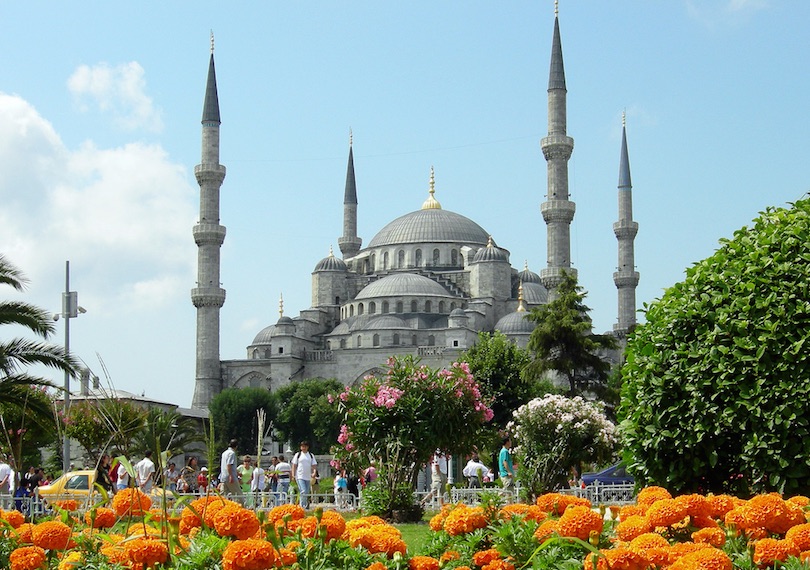
The Blue Mosque, built in the early 17th century, remains an active house of worship today. This means visitors need to time their visits carefully, as the mosque is closed to sightseers during the five daily prayer times for Muslims. All visitors must remove their shoes and women must cover their hair. This is a small price to pay for seeing its priceless treasures that include 20,000 ceramic tiles in various tulip designs and 200 stained glass windows, all with intricate designs. The mosque, built by Sultan Ahmet, takes its name from the blue tiles on the dome and the upper levels of the interior.
1. Hagia Sophia
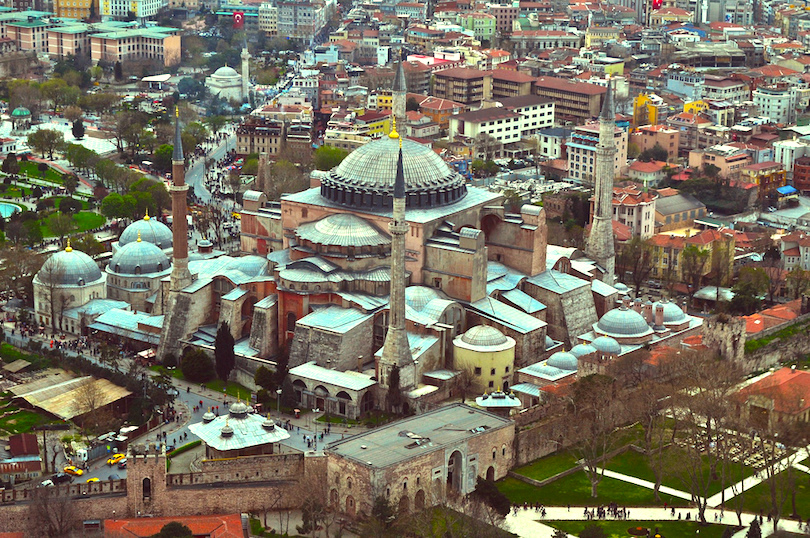
The Hagia Sophia is a masterwork of Roman engineering, with its massive dome (102 feet or 31 meters in diameter) that covers what was for over 1000 years the largest enclosed space in the world.
Hagia Sophia is the Greek term for Holy Wisdom and refers to Jesus Christ, the Holy Trinity’s second person. Constructed between 532 and 537, on the orders of the Byzantine Emperor Justinian, the structure was an Eastern Orthodox cathedral until 1453, except for about 60 years in the 1200s when it served as a Roman Catholic cathedral. In 1453, Ottoman Turks captured Constantinople and converted the edifice into a mosque, removing or plastering over many Christian relics and replacing them with Islamic features. The building closed in 1931, and the Republic of Turkey re-opened it as a museum in 1935.
Visitors can go through the Imperial Gate to the central nave and look up to see the dome’s majestic interior with its mosaic-covered ceiling.
Marble on the walls in the main nave extends to the gallery’s upper reaches, and the inner narthex and side naves have walls entirely covered with marble. The costly marbles of many different colors, selected exclusively for the Hagia Sophia, came from various areas of the empire.
In the Hagia Sophia courtyard is a Fountain of Purification with a Greek inscription in palindrome form that translates, “Wash your sin not only your face.”
Built in 1739, the Hagia Sophia Library contains ancient Turkish tiles, and the engraved, wooden bookshelves hold historical objects as well as books.
Through the years, the church suffered damage from earthquakes, fires and riots, making many repairs and restorations necessary, but it remains a beautiful building that some people call the world’s eighth wonder.
